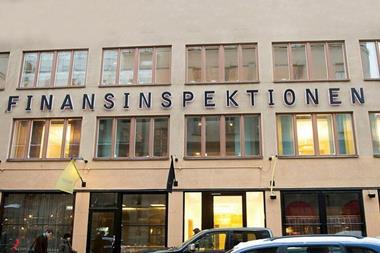The US market for commercial mortgage-backed securities (CMBS) has seen record issuances in 2005, buoyed by a strong underlying commercial property market. It appears to be on course for continued good performance in 2006.
The market has exhibited its strength despite the blows struck by hurricanes Katrina and Rita, which have led to numerous delinquencies on loans in southern US states.
The market for commercial mortgage-backed securities got its start in the late 1980s with the private placement of securities to large investors. The market enjoyed a real boost in 1989 when Congress formed the Resolution Trust Corporation (RTC) to address the savings and loans disaster. The RTC helped assemble the first bond structures that used commercial real estate as collateral.
According to Wachovia Securities analyst Tony Butler the market “took off in earnest in 1996-97”. This was the time when defeasance was added as a feature to deals to protect bondholders. Defeasance is a form of pre-payment protection in which borrowers who want to pre-pay a CMBS loan and remove it from a CMBS deal must replace the principal and interest cash flows in a deal using US Treasury securities.
Issuance in the CMBS market grew by an average 37% through much of the 1990s, reaching $80bn (e70bn) in 1998. However, in August of that year, the market was effectively shut down when the Russian debt crisis caused panic in the general bond market. The market eventually rebounded, helped by the development of collateralised debt obligations (CDOs), which provided a more efficient outlet for CMBS bonds that were below investment grade.
Over the past four years, the CMBS market has attained new issuance records with the help of broader investor distribution, continued lower interest rates, a vibrant underlying real estate market and improved credit-enhancement levels. US issuance has risen from $52.1bn in 2002 to $77.8bn in 2003, $93.1bn in 2004 and about $150bn last year.
As of the second quarter of 2005, there was $470bn-worth of CMBS outstanding in the US market, representing around 40% of the overall asset-backed securities market and around 20% of the overall commercial loan market.
The vitality of the US CMBS market was also reflected by the record number of ratings upgrades issued during 2005. Through the first three quarters of the year, Standard & Poor’s carried out 680 ratings actions on outstanding CMBS, of which 600, or 88%, were upgrades.
The ratings upgrades trend looks likely to continue, at least judging by the soaring rate of defeasance. As Treasury securities used in defeasances are AAA-rated, the higher incidence of defeasance in any particular CMBS deal increases the credit profile and the likelihood that the bond will be upgraded.
A recent report by Wachovia Securities identified 207 CMBS tranches in 124 CMBS deals that had a medium or high probability of being upgraded in the near future. Wachovia expects defeasance to accelerate through the first half of 2006 “assuming short-term interest rates continue to rise, the Treasury curve flattens and, most importantly, commercial property values follow their historical tendency to remain strong for quite some time even as interest rates increase”.
The vitality of the CMBS market has been somewhat overshadowed in recent months by the uncertainty created by hurricanes Katrina and Rita, with the destruction of numerous properties and the displacement of hundreds of thousands of New Orleans residents.
According to S&P, had these “acts of God” not occurred, it is likely there would have been a lot more noise about the CMBS market’s “best three-month performance” during the third quarter of 2005. During the period, S&P upgraded its ratings on 348 CMBS deals, a quarterly record. The 600 year-to-date upgrades at that point were nearly 100 ahead of the upgrades posted for all of 2004.
S&P analyst Roy Chun, managing director of the firm’s CMBS surveillance unit, said: “Clearly, hurricanes Katrina and Rita overshadowed the very positive third quarter experienced by North American CMBS.” He said that the 348 Q3 rating upgrades and 15 downgrades produced a ratio of 23 to one, marking the “highest ratio of any CMBS ratings period we’ve had”.
S&P attributed the ongoing vitality of the North American CMBS market to “continued strength of the real estate market and the abundant liquidity available for property sales and refinancing”. Those factors, combined with continued low interest rates, have fuelled a decline in loan delinquency rates since early 2004.
Another driver behind the heavy supply of CMBS has been the prospect of new federal disclosure rules for the sector. Known as Regulation AB, the rules will require issuers to disclose past performance, including delinquencies and losses, on already-issued deals.
“Some issuers may have pushed through deals that they had planned to issue in early 2006,” said Wachovia’s Tony Butler.
In its quarterly analysis of the global structured finance market, S&P said that Katrina and Rita had minimal impact on CMBS bond ratings owing to the “structural attributes and diversity of assets in most CMBS transactions”.
Since then, S&P has identified $2.25bn in loans for properties located in regions most severely damaged by Katrina, as of November 15. Of that total, payments on $908m in loans were late, with payments on $400m in loans more than a month late.
S&P director of structured finance ratings Larry Kay said that one loan in the affected area was delinquent prior to Katrina. Now there are 62 loans in arrears.
Fortunately for borrowers, many lenders
have deferred payments for customers in hurricane-affected areas, typically for a period of 90 days. When, for many borrowers, the 90 days ended in early December, federal and state regulators urged lenders to consider additional payment deferrals.
The apartment, or multi-family, sector has been the hardest hit in and around New Orleans. Some 63% of loans for multi-family properties, representing $217m in loans, are late, with $121m more than 60 days in arrears, according to Mr Kay.
New Orleans is not the only area where apartment loans are in trouble. At the end of September 2005 the multi-family sector accounted for around a third of the $3bn in loan delinquencies in the US commercial real estate market, according to S&P figures.
Texas has historically been one of the weakest state markets for multi-family properties owing to the affordability of single-family homes there. However, with the displacement of so many New Orleans residents to Texas, Dallas and Houston are seeing revivals in the apartment sector.
“It remains to be seen whether those relocations will be permanent,” said Mr Kay.
Another factor boosting the apartment and hotel sector of the commercial property market - and not just in Texas - has been the rising number of condominium conversions. With continued low interest rates and the escalating prices of single-family homes, there has been a growing demand for conversion of apartments and hotel rooms into condominiums for purchase.












No comments yet